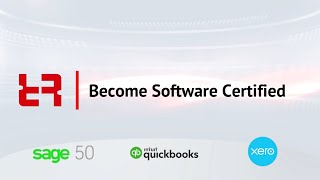
In bookkeeping, journal accounts are used to record cash transactions. Journal entries should include the date, account name and description, debit or credit amounts, as well as a reference number. So that other financial processes can locate the transaction easily, many companies assign a reference to each transaction. For all organizations, journal accounts are not required. In fact, some organizations choose to maintain only one account with a single entry rather than two.
Bookkeeping with double-entry
Double-entry bookkeeping uses debits and credits to record transactions. Each transaction has a different effect on one or both of the accounts. One example is that selling an item will subtract money from the inventory and receiving a payment, crediting the cash accounts. Debits and credits should balance, with the total of debits equaling the sum of credits.
Double-entry accounting is important for tracking money, as it allows for the creation of financial statements that help business owners make better decisions. Double-entry accounting also reduces errors and increases transparency in business finances. While some companies still use manual methods of bookkeeping, many businesses are now using accounting software.
Compound entry
Accounting can use compound entry. These entries can be used to save time and sum up data. These entries can be complicated to complete correctly. To avoid making errors, you need to be careful. Let's examine how to do compound entry in journal accounts.

A compound entry is one that affects multiple accounts. This is different than a simple journal entry because it can contain a variety of credit and debits. This type of entry is also known as a reverse entry. These types are often used to clarify bookkeeping. They reverse any adjusting entries from the previous period.
Adjusting entries
When a transaction in the accounting records was recorded for a longer period than the current accounting period, adjustments to journal entries are necessary. An example is that a company may pay an agent $2,000. This would be on December 1, 2021. The transaction is for six months of coverage. It also represents an expense. But, insurance coverage is not required after December 31. To correct this error, an adjusting entry is required.
Adjusting entries serve to correct the income statement, balance sheet, or balance sheet. An adjusting entry is usually a division of income and expenses over the current period. This is done by three steps. The adjustment is then applied to the general ledger for the next accounting cycle.
Standard journal
Flat file formats for standard journal accounts consist of one or more journal entries. Each entry receives a currency base currency and a currency foreign currency. The amount in a transaction currency must match or exceed the amount in a header BU. The currency in control total must always match the currency of the base currency.
The period of accounting is determined by the date of the journal entries. The journal should contain equal amounts of debits and credits. A ledger is considered to be balanced if its totals do not exceed those in the ledger. A journal can also refer to a journal that is recurs at some frequency.

Recurring journal
Recurring journal accounts are a great way to streamline the creation of your journals. The process is simple, and you don't have to create separate entries for each week or day. First, choose the journal from which to create the journal entries. Click the Search or Lookup button to do this. Next, you will want to input the new codes into the source journal field. Finally, click on the Copy from Source Journal History button.
When you choose recurring journals accounts you can choose the currency. If multi-currency is selected, the currency drop-down menu will not be displayed. The Edit dialog box can be used to modify any information in the Recurring entry record. You can also import additional lines to a Recurring record using the Import button, which is similar to the Import Templates tool.
FAQ
How does an accountant do their job?
Accountants work with clients to ensure they make the most out of their money.
They work closely with professionals such as lawyers, bankers, auditors, and appraisers.
They also work with internal departments like human resources, marketing, and sales.
Accounting professionals are responsible for maintaining balance in the books.
They calculate the amount to be paid and collect it.
They also prepare financial statement that shows how the company is performing.
What is a Certified Public Accountant, and what does it mean?
A C.P.A. certified public accountant is a person who has been certified in public accounting. An accountant with specialized knowledge is one who has been certified as a public accountant (C.P.A.). He/she is able to prepare tax returns and help businesses make sound business decisions.
He/She keeps an eye on the company's cash flow, and ensures that everything runs smoothly.
What type of training is required to become a Bookkeeper?
Basic math skills are necessary for bookkeepers. They need to be able to add, subtract, multiply, divide, fractions and percentages.
They will also need to be able use a computer.
The majority of bookkeepers have a high-school diploma. Some have college degrees.
Statistics
- The U.S. Bureau of Labor Statistics (BLS) projects an additional 96,000 positions for accountants and auditors between 2020 and 2030, representing job growth of 7%. (onlinemasters.ohio.edu)
- Given that over 40% of people in this career field have earned a bachelor's degree, we're listing a bachelor's degree in accounting as step one so you can be competitive in the job market. (yourfreecareertest.com)
- In fact, a TD Bank survey polled over 500 U.S. small business owners discovered that bookkeeping is their most hated, with the next most hated task falling a whopping 24% behind. (kpmgspark.com)
- According to the BLS, accounting and auditing professionals reported a 2020 median annual salary of $73,560, which is nearly double that of the national average earnings for all workers.1 (rasmussen.edu)
- "Durham Technical Community College reported that the most difficult part of their job was not maintaining financial records, which accounted for 50 percent of their time. (kpmgspark.com)
External Links
How To
Accounting for Small Businesses: What to Do
Accounting for small businesses can be a crucial part of any business's management. This task includes keeping track of income and expenses, preparing financial reports, and paying taxes. Quickbooks Online and other software programs are required. You have many options when it comes to accounting for small businesses. You must choose the right method for you, based on your requirements. Here are some top options that you can consider.
-
Use the paper accounting method. You may prefer paper accounting if you are looking for simplicity. This method is simple. You just need to keep track of your transactions each day. If you are looking to ensure that your records are accurate and complete, you may want to consider QuickBooks Online.
-
Use online accounting. Using online accounting means that you can easily access your accounts at any time and anywhere. Some popular options include Xero, Freshbooks, and Wave Systems. These types of software allow you to manage your finances, pay bills, send invoices, generate reports, and much more. They are easy to use, have great features, and many benefits. These programs are a great way to save time and cash on your accounting.
-
Use cloud accounting. Another option you have is cloud accounting. It allows you to store your data securely on a remote server. When compared to traditional accounting systems, cloud accounting has several advantages. Cloud accounting doesn't require expensive hardware and software. Second, it offers better security because all your information is stored remotely. It also saves you time and effort in backing up your data. It makes it easy to share files with others.
-
Use bookkeeping software. Bookkeeping software is similar with cloud accounting. However you must purchase a computer in order to install the software. After the software has been installed, you can connect to your internet account to access them whenever you like. In addition, you will be able to view your accounts and balance sheets directly through your PC.
-
Use spreadsheets. Spreadsheets enable you to manually enter your financial transactions. To illustrate, you could create a spreadsheet in which you can record your sales figures daily. A spreadsheet has the advantage of being able to modify them whenever you wish without needing a complete update.
-
Use a cash book. A cashbook is a book that records every transaction you make. There are many sizes and shapes of cashbooks, depending on the space available. Either keep a separate notebook each month, or you can use one notebook that covers multiple months.
-
Use a check register. A check register is a tool that helps you organize receipts and payments. Simply scan your items into your scanner to transfer them to the check register. Notes can be added to the items once they are scanned.
-
Use a journal. A journal is a type of logbook that keeps track of your expenses. This is a good option if you have lots of recurring expenses like rent and insurance.
-
Use a diary. Keep a journal. You can use it to keep track of your spending habits and plan your budget.